By Dr. Daniel Faber

Much is being made in our community and the press about community use of opioid/opiate/ narcotic medications. The recent statistic that deaths due to prescription opioids now exceeds motor vehicle accidents and gun accidents combined is cause for alarm.
It was not always so. A couple of generations ago, opioid prescriptions to treat chronic non-cancer pain was generally frowned upon. Fear of iatrogenic addiction, or misuse, was cited as a major factor. An article in JAMA in 1954 reported that in a population of addicts 27% claimed that their drug use started with legitimate prescriptions for a painful condition. It seems we are not much better able to deal with the problems of chronic opioid prescriptions today than then: “…because of the development of tolerance to the analgesic action of narcotics, eventually an impasse is reached in which the patient’s daily narcotics requirements are high, yet the alleviation of pain is inadequate. In addition to being medically unsatisfactory, this situation is fraught with the possibility of economic and social disaster for the addicted patient and his family.”1
In 1986, a paper was published in the Journal of Pain that concluded “that opioid maintenance therapy can be a safe, salutary and more humane alternative to the options of surgery or no treatment in those patients with intractable non-malignant pain and no history of drug abuse.”2 This coincided with a political movement to lessen the risk of prosecution of doctors for prescribing opioids to chronic pain patients, and an education movement to convince doctors that their patients would be better off if opioids were used much more frequently to treat chronic pain. The underuse of opioids for this purpose was even called “A National Disgrace.”3
By almost any measure, this push to increase opioid prescriptions has been wildly successful. Unfortunately, the benefits to patients have not been as obvious as hoped. In fact, we are now of the opinion that chronic daily use of opioids (CDO) is almost always detrimental for the patient.
Consider The Following:
- Injection of local anesthetics (LA) is experienced as briefly painful by most people. Patients on CDO report higher levels of pain with standardized LA injections than non-opioid users. The higher the opioid dose, the greater the reported pain. The longer the patient has been on opioids, the greater the reported pain.4
- Cold Pressor test: Non-opioid using subjects can keep a hand in swirling ice water for about 50% longer than CDO patients.5
- Pressure applied to index finger by a calibrated instrument demonstrated that CDO patients could tolerate 2.16 oz of pressure, whereas non-opioid subjects could tolerate 3.96 oz.6
- “Data from a large, population-based prospective study of workers with low back injuries reported a twofold increased likelihood, after adjusting for injury severity, of developing long-term disability after receiving prescription opioids soon after injury.”7
Experimental data strongly implies that CDO use leads to increased experience of pain, rather than an improvement. So what happens if CDO patients stop using their opioids? Reports from many sources indicate that pain improves! In a study of 25 relatively high opioid using patients, every single patient had an improvement in his/her reported pain score after tapering off of opioids.8
We now have hundreds of similar anecdotes in our own practice that echo this phenomenon. “I just spoke with a patient who was referred for medication management two months ago for peripheral neuropathy. He was clearly hyperalgesic on high dose oxycodone. I told him our philosophy. He tapered his meds to off. He is endorsing little to no pain at this time and just called to tell us that he hadn’t agreed with our philosophy, but is now a ‘believer’.”9 While it is unusual to get such good pain relief from tapering off of opioids, more modest improvements are extremely common.
Patients Cannot Tell The Difference Between Withdrawal Pain And Their Underlying Pain Syndrome. Most Patients Cannot Tell The Difference Between Emotional Or Psychic Pain And Their Underlying Pain Syndrome.
So why is it so hard for patients to understand the ineffectiveness of CDO? In my view there are two main reasons: the withdrawal syndrome and intoxication.
CDO is associated with opioid dependence and a characteristic withdrawal syndrome. Opioid withdrawal is a painful state, and patients with an underlying pain syndrome will experience an increase in their typical pain during early withdrawal. Every patient has forgotten to take one of their pills on time because he/she was focused on the business of life. At some point she experienced markedly increased pain, and then remembered the forgotten pill. Taking the missed opioid immediately lessens the severity of the withdrawal. The patient thinks that the opioid is treating the underlying pain, when in reality it is treating the withdrawal symptoms.”10
Patients cannot tell the difference between withdrawal pain and their underlying pain syndrome. Most patients cannot tell the difference between emotional or psychic pain and their underlying pain syndrome. If he/she takes an opioid and he “feels better,” he usually interprets this as somatic analgesia, when in reality he may only be getting a mild intoxication. His depression or anxiety is more tolerable, at least for a couple of hours. He may report feeling “energized” or more “peaceful.” This lessening of psychological pain is usually associated with short-acting opioids that have a rapid rise in blood levels after consumption. These patients will report significant benefit from immediate release oxycodone, but little to no benefit at all from a higher dose of long-acting oxycodone like the new formulation of oxycontin. It is not the presence of the drug, per se, that they like; it is the rapid changes in blood level that they like.
Using opioids to treat depression, anxiety, and other psychological ills is not well studied, and we believe is fraught with potential hazard, as we are seeing in our communities at the present time. A recent Wall Street Journal article quoted the lead author of the 1986 study previously mentioned: “Clearly, if I had an inkling of what I know now then, I wouldn’t have spoken in the way that I spoke. It was clearly the wrong thing to do.”11 This is a politically measured way of saying “I made a mistake.”
Recently, the American Academy of Neurology published a position paper on CDO. They reviewed the published literature and concluded: “although there is evidence for significant pain relief in the short term (average duration of trials 5 weeks, range 1–16 weeks), there is no substantial evidence for maintenance of pain relief over longer periods of time, or significant evidence for improved physical function.”12 We believe that the absence of such evidence is because CDO simply does not provide the expected benefit over the long term.
Daniel Faber, MD, is a member of the UMA Editorial Board. He is Board Certified by the American Board of Anesthesiology with added qualifications in both Addiction Medicine and Pain Medicine.
Footnotes
1 Experience in the Management of Patients Medically Addicted to Narcotics, JAMA. 1954;156(7):684-691.
2 Chronic use of opioid analgesics in non-malignant pain: report of 38 cases. Pain. 1986 May;25(2):171-86
3 Ronald T Libby in “The Pain Community” a monthly news letter published by The American Pain foundation, Oct 2007
4 The Effect of Opioid Dose and Treatment Duration on the Perception of a Painful Standardized Clinical Stimulus, Reg Anesth Pain Med. 2008 May-Jun;33(3):199-206.
5 Hyperalgesic responses in methadone maintenance patients, PAIN, Volume 90, Issue 1 , Pages 91-96, 1 February 2001
6 Are Psychoactive Substance (Opioid)-Dependent Chronic Pain Patients Hyperalgesic?, Pain Practice, Volume 11, Issue 4, 2011 337–343
7 Early opioid prescription and subsequent disability among workers with back injuries: the disability risk identification study cohort, Franklin GM, Stover BD, Turner JA, Fulton-Kehoe D, Wickizer T., Spine 2008;33:199– 204.
8 Significant pain reduction in chronic pain patients after detoxification from high-dose opioids, Journal of Opioid Management 2:5 September/ October 2006
9Internal communication, message from my partner Feb 2014
10 Pleasure into pain: The consequences of long-term opioid use, Addictive Behaviors 29 (2004) 1311–1324
11Thomas Catan and Evan Perez, Wall Street Journal, Dec. 14, 2012.
12 Opioids for chronic noncancer pain: A position paper of the American Academy of Neurology. Neurology 2014;83;1277-1284

I can’t find anywhere that says if you accept Molina Medicaid. I was in a car accident and am trying to learn how to walk again. And my husband has muscular dystrophy and is always having hip pain. Would you be able to help us?
Unfortunately, we do not take Medicaid.